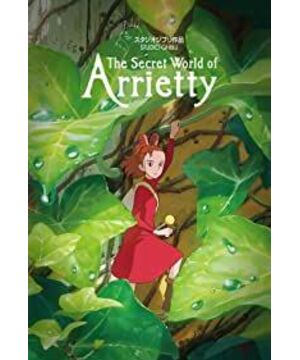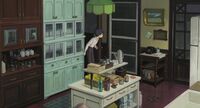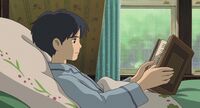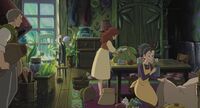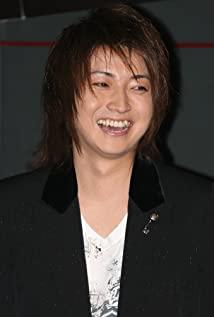The ultimate two-dimensional animation on a global scale is naturally Japan. Japanese animation has a wide reach, Hayao Miyazaki's fresh natural world, Otomo Keyang's speculative future world, Jin Min's bizarre dream world, etc., etc., using the most primitive, The most delicate brushes build one art after another that goes far beyond animation.
Everyone says that the golden age of Hayao Miyazaki and Isao Takahata is gone forever. People are like this, and the best is what has passed away. What everyone misses is the majestic forests and oceans, and the world of Hayao Miyazaki that is accustomed to the magnificent and free galloping. In fact, I think "Arrietty Who Borrows Things" is not only the heroine of Hayao Miyazaki's resolute and brave heroine as always, but the story of "Arrietty the Borrower" is light and delicate. Reminds me of another unremarkable movie written by Hayao Miyazaki - "Listen to the Side", directed by Kondo Yoshifumi. It's all about growth and first love. It's a bit sad to think that such heart-warming, slightly sad, and most beautiful pink memories of first love were all woven by a bad old man with a big beard.
The movie was adapted from Mary Norton's fairy tale. After reading part of the original text, I felt that Hayao Miyazaki had done a lot of subtraction. Fairy tales are inherently trivial and have many plots. Gong has cut the story into a whole that is better to form a film, otherwise it will be too messy. It also changed the original fairy tale for children into a story with a taste of first love that can be read by adults.
It is said that the drama of this story is not strong enough, but I think it is just that the action is not so big, at least the beginnings and turns, suspense and foreshadowing are all there. And it's very delicate, just like the exquisite bungalows in the movie that were specially shipped from the UK for the little people to live in. Several props are set up to make people feel comfortable, and a pin becomes a testimony to Arrietty's growth, from rashly losing the spoils to saving her mother. A sugar cube connects Arrietty and Xiang Menglong's love and opens their hearts. In addition, the laurel leaves brought back by Arrietty at the beginning of the film are put into a small kettle handed down by Xiang for generations at the end of the film, and the aroma seems to float into the viewer's heart through the screen. This subtle design won't necessarily work for everyone, but it definitely has a classic beauty to it.
In general, Hayao Miyazaki's style is too obvious, its soul belongs to Hayao Miyazaki, and it is difficult to judge which part belongs to Mirin Hongchang. The soundtrack seems a little fresh, and the soft English ballads seem to be fine without Hisaishi. The lyrics and melody that are highly relevant to the movie are unforgettable. I listened to its original sound repeatedly before going to bed yesterday, and I really liked it.
If you want to raise a girl, you must develop a heroine in Hayao Miyazaki's writings, who is stubborn, beautiful, brave, natural, spiritual, and natural, growing up in bumps and bumps.
But what I like most about this film is the sad tone behind the bland story. From the beginning, Xiang is a beautiful teenager with a heart disease, and the villain Arrietty is from a race that is disappearing day by day. At the end of the story, Xiang and Arrietty had to say goodbye in tears. Regret is fatal, and regret is beautiful. Arrietty drifted along the river to the distance, to seek the possibility of the continuation of the race.
Their fate is uncertain, but the fate of mankind, why is the future uncertain? One genocide, another genocide, human beings are not just one of the races. When I read this in the brisk and slightly sad background music of the movie, my nose is sore.
Anyway, time is passing, let's look forward to the era of Hayao Miyazaki
View more about The Secret World of Arrietty reviews


